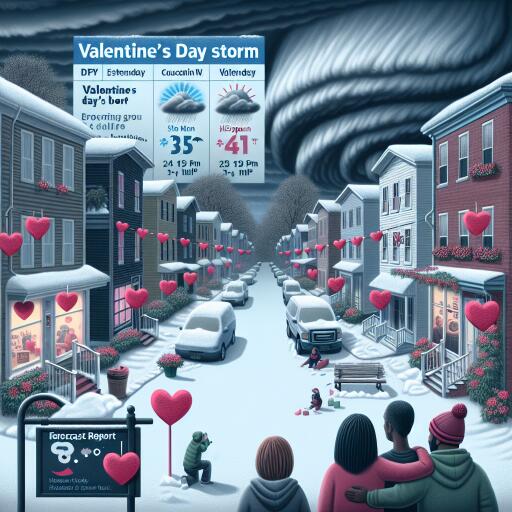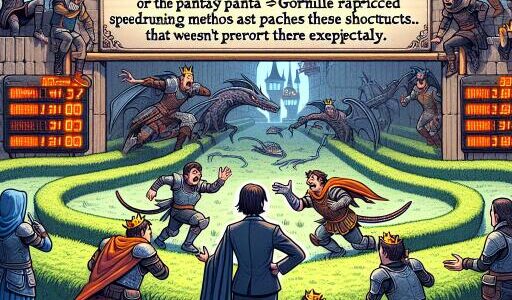Winter’s Chill Set to Return: A Valentine’s Week Nor’easter Forecasted
After experiencing a series of unusually warm days, the East Coast is on high alert as the weather takes a dramatic turn. A potential Nor’easter threatens to mark its presence just in time for Valentine’s Day, disrupting the plans of countless romantics and commuters alike. This sudden shift in weather could see cities such as New York and Boston grappling with severe winter conditions, including the possibility of snow accumulation and blizzard-like storms.
In the heart of the Big Apple, residents might prepare to wake up to a blanket of up to three inches of snow. Meanwhile, Boston faces the prospect of battling a so-called ‘bomb cyclone’—a rapid intensification of weather conditions leading to fierce winds and imposing snowfall. This meteorological phenomenon, known for its rapid development, could significantly impact the region.
As meteorologists at AccuWeather keep a close eye on this storm’s trajectory, there’s a growing concern over its potential strength and the subsequent snowfall it may bring. Predictions from the National Weather Service hint at a scenario where snow transitions to rain, only to mix again, spanning from Monday into Tuesday, presenting a complex challenge for forecasters and residents alike.
Current models suggest that many areas of New York could see snow from Monday night into Tuesday, with New York City potentially receiving at least three inches. Central New York regions, such as Utica and Rome, face a 60 to 80 percent likelihood of snowfall. This comes after a period of mild weather, raising the stakes for an unexpected and possibly disruptive weather event.
Despite the cold snap, the impending snow may not reach monumental levels due to the warmth preceding the storm. “The pattern change introduces a more active, colder weather scenario across the Midwest to Northeast, potentially initiating a series of snow events,” explained a prominent meteorologist. This marks a significant departure from the balmy weather experienced in early February, transitioning to a colder, more turbulent period.
The storm set to strike the Northeast heralds a drop in temperatures following a nearly record-high warmth, especially affecting southern New England. The evolving weather fronts signal a mixed bag of precipitation, comprising rain and snow close to the coastline but likely more substantial snowfall inland and across elevated terrains. Conversely, New Jersey might see flurries transitioning to rain, emphasizing the storm’s variable impact across different regions.
Although the potential for heavy snowfall along the I-95 corridor appears slim due to the need for a perfect confluence of weather factors, the National Weather Service hasn’t completely ruled out significant snow events. Before the storm’s arrival, residents might relish the persisting spring-like warmth, a contrast to the possible blizzard conditions reminiscent of 2010’s ‘Snowmageddon.’ This historic blizzard, marked by severe snowfall and freezing temperatures, had significantly impacted the Northeast, claiming 41 lives.
Forecasts suggest a few more snowstorms may be on the horizon for February or early March, possibly echoing the dramatic weather patterns of past winters. While Washington DC might avoid the worst of the upcoming conditions, memories of the city’s struggle during the last ‘snowmageddon’ linger, highlighting the unpredictability and potential severity of winter storms in the region.
As the East Coast gears up for this impending Nor’easter, communities are reminded of winter’s ability to surprise and challenge, even as the calendar edges closer to spring. This time, the looming Valentine’s Day storm serves as a stark reminder of nature’s capacity to disrupt and dazzle in equal measure.









